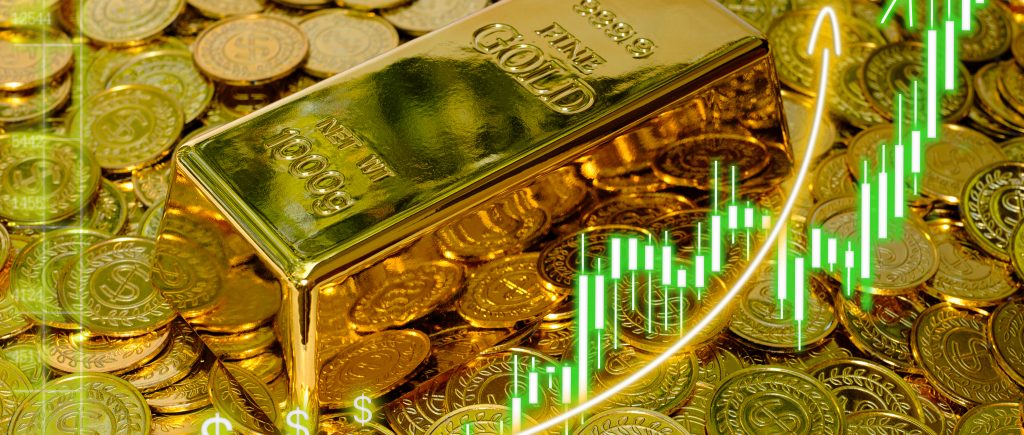Buoyed by market demand in the safe haven metal, gold prices have embraced the task of recovering from recent losses amid a stronger US dollar and rising US Treasury yields. The market became more stable as a result of the Middle East tensions de-escalating, which also reduced demand for gold purchases.
On the data front, although US durable goods orders were strong according to the data, expectations for a rate decrease by the Federal Reserve have shifted to later in the year. Wednesday saw some recovery for gold following two consecutive negative sessions at the start of the week as geopolitical concerns subsided. Buyers jumped in to purchase the most recent dip despite better-than-expected US economic statistics, a strong US dollar, and higher US Treasury yields. As of this writing, the price of an ounce of gold is $2318.04, up 0.14%.
Earlier on Wednesday, the Gold Index, or XAU/USD, was down 0.05% at $2,317. After Iran and Israel had exchanged fire, the Middle East situation seemed to have de-escalated. The majority of market investors believe that the Federal Reserve will drop the fed funds rate for the first time in September 2024, so expectations of a rate cut in June or July have evaporated.
According to data released by the US Department of Commerce, core sales fell short of forecasts but improved from the previous month, while durable goods orders increased in March, surpassing February’s figures.
US durable goods orders rose sharply in March, rising 2.6% MoM from a previous increase of 0.7% and exceeding 2.5%. Durable Goods Orders increased by 0.2% MoM when transportation was excluded, which was better than the 0.1% gain in February but less than the 0.3% predicted.
Further information on the possible timing of the Fed’s interest rate reductions will be provided by upcoming Q1 GDP statistics and core PCE inflation readings. The core Personal Consumption Expenditures (PCE) Price Index, the Fed’s favoured inflation indicator, is predicted to stay stable at 0.3%. It is anticipated that the yearly core PCE rate will decrease to 2.6% from 2.8% in February, suggesting a possible easing of inflationary pressures.
The US S&P Global PMI survey on Tuesday was softer than anticipated, which raised the likelihood of a rate drop in July. “The US economic upturn lost momentum at the start of the second quarter, with the flash PMI survey respondents reporting below-trend business activity growth in April,” stated Chris Williamson, Chief Business Economist at S&P Global Market Intelligence. This could contribute to lowering the persistently high inflation rate, which is still much higher than the Fed’s core target of 2%.
Based on data gathered by the Chicago Board of Trade (CBOT), traders anticipate that the fed funds rate will end 2024 at 4.98%, up from Tuesday’s 4.965%. The benchmark rate for the US 10-year Treasury increases by six basis points (bps) to 4.66%. The US Dollar Index (DXY) is now at 105.87, up 0.18%.
Technically speaking, gold gained some ground even though it formed a “bearish engulfing” chart pattern that allowed for a decline. On Wednesday, buyers are in the lead, but they are not yet out of the woods. They can’t expect to hit $2,400 unless they raise the spot price of gold over the $2,373 low of April 19. When reached, the all-time high of $2,431 would come next, then Friday’s high of $2,417.

 Noor Trends News, Technical Analysis, Educational Tools and Recommendations
Noor Trends News, Technical Analysis, Educational Tools and Recommendations




